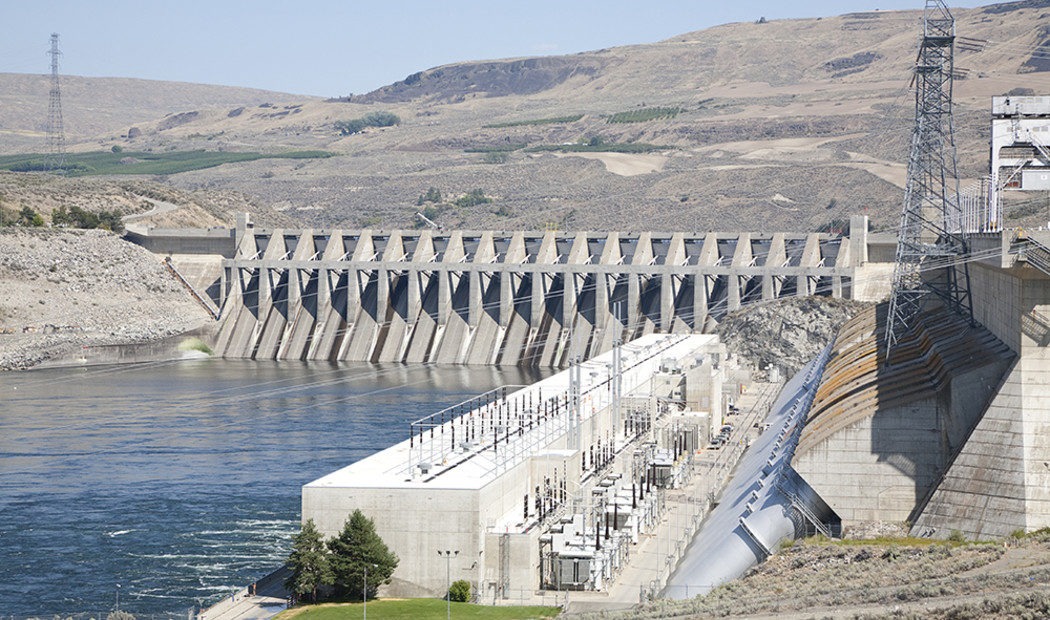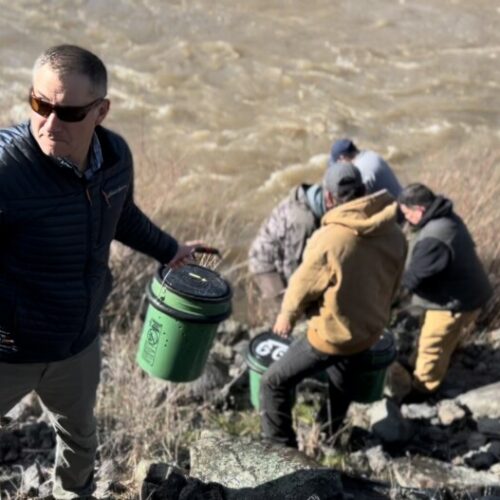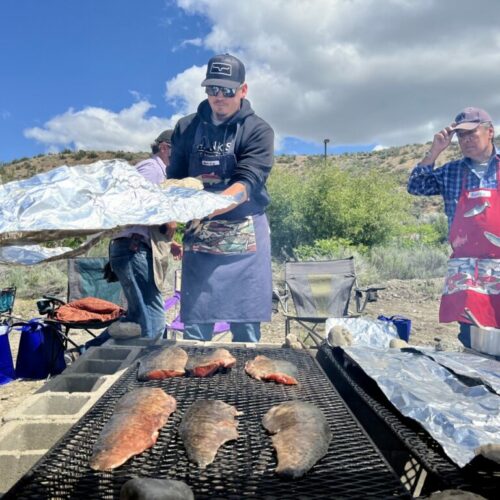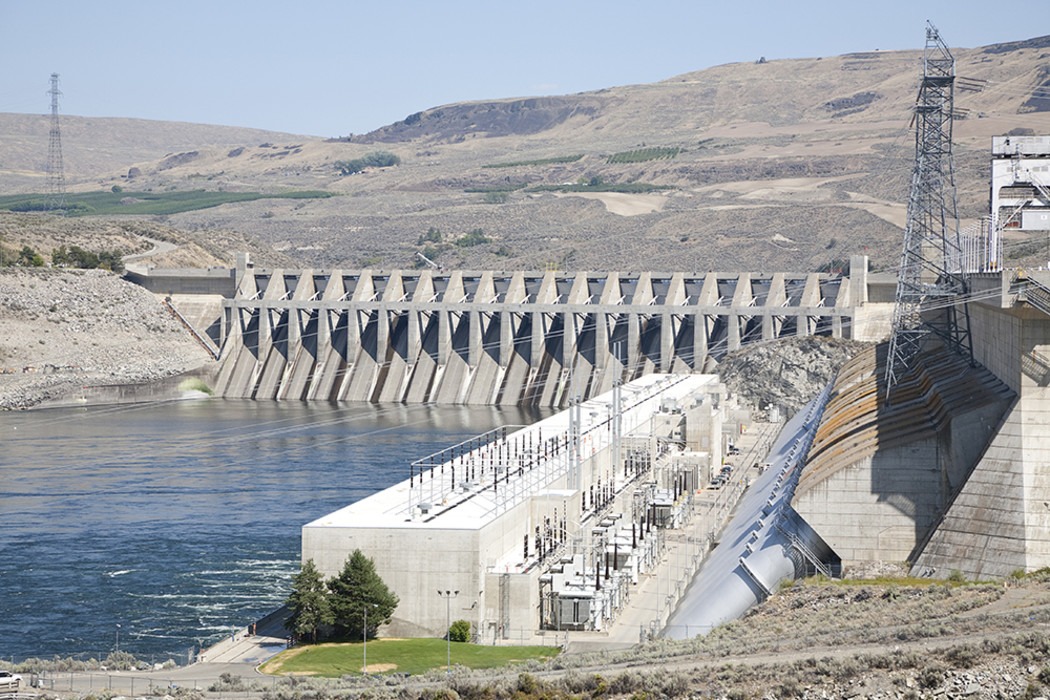
New Energy Storage Project On Upper Columbia Brings Jobs — And Concerns From Colville Tribes
READ ON
A new energy storage project is in the works near eastern Washington’s Chief Joseph Dam on the Columbia River. The project is expected to bring construction jobs to the region. But the nearby Confederated Tribes of the Colville Reservation worry it would harm important cultural areas.
The Pearl Hill battery project would work like this: When there’s extra energy on the grid, it would pump water stored behind the dam in the Columbia River — known as Rufus Woods Lake — to a smaller reservoir up high. Then, when more energy is needed (like when people come home from work), it could generate power by releasing that stored water through a hydro turbine back into the lake.
Project backers are still applying for licensing with the Federal Energy Regulatory Commission. A FERC spokesperson said there is not yet a timeline for when a final decision on the license will be issued.
The Pearl Hill site is by far the smallest project in the Northwest, compared to similar facilities in the works. It would be able to produce up to five megawatts at a time during peak capacity, or roughly the amount of power that by two wind turbines can generate.
But its builders – Shell Energy North America – say the project is important to help make the power grid more reliable. These types of projects are expected to back up other renewable sources when the wind isn’t blowing and the sun isn’t shining.
According to the final environmental assessment for the Pearl Hill hydropower license, “Issuing a license for the Pearl Hill Project would allow Shell to generate electricity at the project for the term of the new license, making electric power from a renewable resource available to the regional grid.”
In documents filed to the Federal Energy Regulatory Commission, the Confederated Tribes of the Colville Reservation don’t support the project. The Colville Tribes say the project will harm cultural artifacts and plants used as traditional food and medicines.
“It’s just getting harder and harder for our people to find a lot of these resources for ceremonial purposes, let alone as a healthy nutritious food to sustain our people,” said Colville Business Council Chairman Rodney Cawston. “The archeological resources are very significant to us. Once those are destroyed, you can never bring them back again. Those places were used by our ancestors in many different ways. The things that were left behind today are very critical to us.”
In the documents, the Colville Tribes questioned whether such a small project is worth the cultural harm it could cause. They also worried it would take more energy to pump water up the hill to be stored than the project would ultimately generate.
Officials at Shell Energy North America were unavailable for an interview for this story.
The largest proposed pumped storage facility in the Northwest would be built outside Goldendale, Washington. Compared to the Pearl Hill project, the Goldendale pumped storage project could generate 1,200 megawatts.
A large storage project near Klamath Falls, Oregon, recently received federal approval, making it the first pumped storage project to be licensed in the Northwest since a project at Grand Coulee Dam in 1973. Residents there told Oregon Public Broadcasting they were concerned about hits to their property values. The Klamath Tribes also raised concerns about that project’s upper reservoir being built on a culturally important site.
Pumped storage projects are on the rise in the Pacific Northwest – with nine planned facilities on the books for Washington, Oregon, Idaho and Montana, according to a December presentation given to the Northwest Power and Conservation Council.
In a blog post, council staff said power generated from pumped hydropower can be adjusted to compliment renewable energy, which “is a critical need as more renewable generation is added to the power grid.”
Related Stories:

Feds announce millions in funding to bring salmon back to the Upper Columbia River
A line of about a dozen people passed buckets of summer chinook salmon to be released into Hangman Creek. (Credit: Courtney Flatt) Listen (Runtime 1:05) Read In a historic agreement,… Continue Reading Feds announce millions in funding to bring salmon back to the Upper Columbia River

Para las tribus, la bienvenida del salmón al Alto Columbia es un recordatorio del ‘trabajo de toda una vida’
El sol apenas comenzaba a salir sobre el río Columbia en Bridgeport, Washington, cuando un pescador Colville capturó el primer salmón de la temporada. Continue Reading Para las tribus, la bienvenida del salmón al Alto Columbia es un recordatorio del ‘trabajo de toda una vida’

For tribes, welcoming salmon to the Upper Columbia is a reminder of ‘lifelong work’
Ira Stevenson preps salmon filets for the salmon bake after a First Salmon ceremony at Chief Joseph dam in north central Washington. (Credit: Courtney Flatt.) Listen (Runtime 4:04) Read The… Continue Reading For tribes, welcoming salmon to the Upper Columbia is a reminder of ‘lifelong work’
















